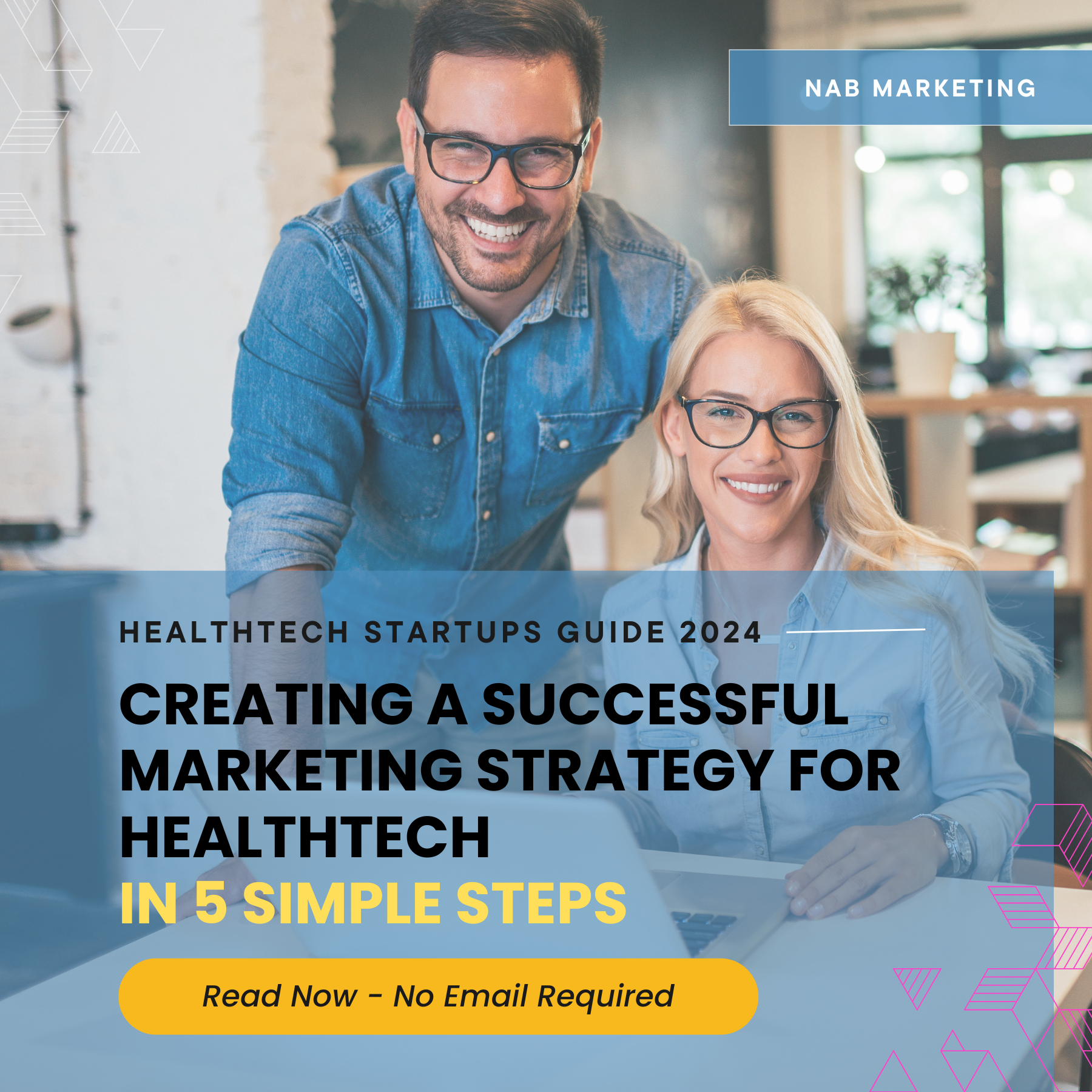Unlocking the Secrets to Boost Lead B2B Generation: Uncover Why Your Marketing Strategies Are Falling Short
Are your marketing strategies failing to generate the leads you desire? Do you feel like you're missing out on some secret formula that other businesses seem to have mastered?
Well, fret not, because in this article, we're going to unlock the secrets to boosting lead generation.
It's no secret that lead generation is essential for business growth and success. However, many health, tech and services businesses struggle with finding the right strategies to attract and convert potential customers. But fear not, because we're here to help you uncover why your marketing efforts might be falling short and provide you with the solutions you need to unlock the full potential of lead generation.
In this article, we'll delve into the common mistakes businesses make when it comes to lead generation and explore effective strategies that can propel your business forward. Whether you're a seasoned marketer or just starting out, this article is a must-read if you want to boost your lead generation efforts and take your business to new heights. So, let's dive in and unlock the secrets to successful lead generation.
Understanding Lead Generation: What It Is and Why It Matters
Lead generation is the process of attracting and converting potential customers into leads, who have shown an interest in your product or service. These leads are then nurtured through the sales funnel until they eventually become paying customers. It's a crucial aspect of any marketing strategy because without leads, a business cannot grow.
So, why does lead generation matter? Well, it's simple. More leads mean more potential customers, which in turn leads to increased sales and revenue. It's the lifeblood of any business, regardless of its size or industry.
Without a steady stream of leads, businesses would struggle to survive in today's competitive market.
However, many businesses struggle with lead generation because they fail to understand the underlying principles and best practices.
They may be employing outdated tactics or targeting the wrong audience. In the following sections, we'll explore some common mistakes businesses make in their lead generation strategies and provide you with the solutions to overcome them.
Common Mistakes in Lead Generation Strategies
Mistake 1: Lack of a clear strategy
Many businesses dive headfirst into lead generation without a clear plan in place. They may be sporadically running ads or sending out generic emails, hoping to attract leads. However, without a well-defined strategy, these efforts often fall short.
Solution: Before implementing any lead generation tactics, take the time to develop a comprehensive strategy. Determine your target audience, set clear goals, and outline the steps you'll take to attract and convert leads. This will ensure that all your efforts are aligned and have a higher chance of success.
Mistake 2: Focusing on quantity over quality
Some businesses make the mistake of prioritising the quantity of leads over their quality. They may be running mass advertising campaigns or purchasing email lists, resulting in a high volume of leads that are not genuinely interested in their offerings.
Solution: Instead of chasing after a large number of leads, focus on attracting high-quality leads that are more likely to convert into customers. This can be achieved by targeting specific demographics, using personalised messaging, and offering valuable content that addresses their pain points.
Mistake 3: Neglecting lead nurturing
Lead generation doesn't stop at capturing contact information. Many businesses fail to nurture their leads, leaving them in the dark and reducing the chances of conversion. This can lead to missed opportunities and wasted resources.
Solution: Implement a lead nurturing strategy that includes regular communication with your leads. Provide them with relevant content, address their concerns, and guide them through the sales funnel. By building relationships and establishing trust, you increase the likelihood of converting leads into customers.
Identifying the Gaps in Your Current Marketing Strategies
Now that we've explored some common mistakes in lead generation strategies, it's time to identify the gaps in your current marketing efforts. This step is crucial as it allows you to pinpoint areas that need improvement and implement targeted solutions.
Here are a few steps to help you assess your current strategies:
Step 1: Evaluate your goals and metrics
Take a close look at your marketing goals and the metrics you're using to measure success. Are your goals specific, measurable, attainable, relevant, and time-bound (SMART)? Are the metrics you're tracking providing valuable insights into your lead generation efforts?
Step 2: Analyse your current lead generation channels
Review the channels you're currently using to generate leads. Are you leveraging the right platforms to reach your target audience? Are your messaging and offers compelling enough to capture their attention? Identify any gaps or areas of improvement in your current channels.
Step 3: Assess your lead nurturing process
Examine how you're nurturing your leads and whether it's an effective process. Are you providing valuable content and personalised messaging? Are you using automation tools to streamline the process? Identify any gaps in your lead nurturing efforts and determine how to address them.
Step 4: Review your data and analytics
Analyse the data and analytics from your lead generation efforts. Look for patterns, trends, and areas of improvement. Are there any bottlenecks or drop-offs in the conversion process? Use this data to identify gaps and make data-driven decisions to optimise your strategies.
By following these steps, you'll be able to identify the gaps in your current marketing strategies and lay the foundation for targeted improvements. In the next sections, we'll explore effective strategies to boost your lead generation efforts and overcome these gaps.
Targeting the Right Audience: Persona Development and Segmentation
One of the key factors in successful lead generation is targeting the right audience. You may have a great product or service, but if you're not reaching the right people, your efforts will be in vain. This is where persona development and segmentation come into play.
Persona development involves creating detailed profiles of your ideal customers. These profiles include demographic information, pain points, motivations, and other relevant details. By understanding your audience on a deeper level, you can tailor your messaging and offers to resonate with them.
Segmentation, on the other hand, is the process of dividing your audience into smaller, more specific groups based on shared characteristics. This allows you to deliver targeted content and offers to each segment, increasing the chances of conversion.
To develop personas and segments effectively, you can start by conducting market research, analyzing your existing customer base, and leveraging data and analytics. Once you have a clear picture of your target audience, you can create personalised content, craft compelling offers, and optimise your marketing campaigns to resonate with each segment.
Crafting Compelling Offers and Call-to-Actions
When it comes to lead generation, having compelling offers and call-to-actions (CTAs) is crucial. Your offers should provide value to your audience and entice them to take action, such as signing up for a newsletter, downloading a free e-book, or requesting a demo of your product.
To craft compelling offers and CTAs, consider the following:
- Understand your audience's pain points: What are the challenges your audience is facing? How can your product or service help solve their problems (refer to your audience segmentation)? By addressing their pain points directly, you can create offers that are highly relevant and appealing.
- Provide valuable content: Whether it's an e-book, a webinar, or a free trial, make sure your offer provides real value to your audience. High-quality content builds trust and positions your business as an industry expert.
- Create a sense of urgency: Urgency can be a powerful motivator for action. Use words and phrases that convey a limited time offer or scarcity to encourage your audience to act now rather than later.
- Use clear and compelling CTAs: Your CTAs should be concise, action-oriented, and visually appealing. Use strong verbs and compelling language to encourage your audience to take the desired action.
Remember, the key to crafting compelling offers and CTAs is to align them with your audience's needs and motivations. By understanding what drives them, you can create offers that resonate and increase the chances of conversion.
Optimising Landing Pages for Conversion
Landing pages play a crucial role in lead generation. They are the first point of contact between your audience and your business, and their design and content can make or break the conversion process. To optimise your landing pages for conversion, consider the following best practices:
- Keep it simple and focused: A clutter-free and visually appealing design will help your audience focus on the main message and take the desired action. Avoid distractions and provide a clear path to conversion.
- Use persuasive copy: Your landing page copy should be concise, persuasive, and tailored to your audience. Clearly communicate the value of your offer and highlight its benefits. Use persuasive language and testimonials to build trust.
- Optimise for mobile: With the rise of mobile browsing, it's crucial to ensure your landing pages are mobile-friendly. Test your pages on different devices and screen sizes to ensure a seamless user experience.
- Include trust indicators: Trust indicators such as customer testimonials, security badges, and social proof can help build credibility and increase the likelihood of conversion. Place them strategically on your landing page to instill trust in your audience.
- A/B test and optimize: Continuously test different elements of your landing pages, such as headlines, images, CTAs, and forms. A/B testing allows you to identify what works best for your audience and make data-driven optimisations.
By following these best practices, you can optimise your landing pages for conversion and increase the effectiveness of your lead generation efforts.
Leveraging Content Marketing for Lead Generation
Content marketing is a powerful tool for lead generation. By creating and distributing valuable and relevant content, you can attract and engage your target audience, establish your brand as an industry expert, and generate leads in the process.
Here are some strategies for leveraging content marketing for lead generation:
- Develop a content marketing strategy: Define your goals, target audience, and the types of content you'll create. Create a content calendar to ensure consistent delivery of valuable content.
- Create high-quality content: Focus on creating content that educates, entertains, or solves a problem for your audience. Use a mix of formats such as blog posts, videos, infographics, and podcasts to cater to different preferences.
- Optimize your content for search engines: Conduct keyword research and optimize your content for relevant keywords. This will help your content rank higher in search engine results and attract organic traffic.
- Promote your content: Don't just create great content; make sure it reaches your target audience. Promote your content through social media, email marketing, and other distribution channels to increase its visibility.
- Gate valuable content: To generate leads, consider gating valuable content behind a form. This allows you to capture contact information in exchange for access to the content.
Content marketing is a long-term strategy that requires consistency and dedication. By providing value to your audience through your content, you can attract and nurture leads over time.
Incorporating Social Media and Influencer Marketing into Your Strategy
Social media and influencer marketing can significantly boost your lead generation efforts. With billions of active users on social media platforms, it's a vast pool of potential leads waiting to be tapped into.
Here are some tips for incorporating social media and influencer marketing into your lead generation strategy:
- Choose the right platforms: Identify the social media platforms where your target audience is most active. Focus your efforts on those platforms to maximize your reach and engagement.
- Build a strong social media presence: Create a consistent and engaging brand presence on social media. Share valuable content, engage with your audience, and build relationships with influencers and industry experts.
- Leverage social media advertising: Take advantage of social media advertising to target specific demographics and reach a wider audience. Use compelling visuals, clear CTAs, and targeted messaging to encourage lead generation.
- Collaborate with influencers: Identify influencers in your industry who have a significant following and align with your brand values. Collaborate with them to amplify your reach and tap into their engaged audience.
- Run social media contests and giveaways: Contests and giveaways can be an effective way to generate leads on social media. Encourage participation by offering a valuable prize and requiring participants to provide their contact information.
Remember, social media is not just a platform for self-promotion. It's an opportunity to build relationships, engage your audience, and position your brand as a trusted resource. By incorporating social media and influencer marketing into your lead generation strategy, you can expand your reach and attract high-quality leads.
Measuring and Analyzing the Effectiveness of Your Lead Generation Efforts
Measuring and analysing the effectiveness of your lead generation efforts is crucial for continuous improvement and optimisation. By tracking key metrics and analyzing data, you can identify what's working, what's not, and make data-driven decisions to refine your strategies.
Here are some key metrics to consider:
- Conversion rate: Measure the percentage of leads that convert into customers. This metric indicates the effectiveness of your lead nurturing and conversion strategies.
- Cost per lead: Calculate the cost associated with generating each lead. This metric helps you assess the efficiency of your lead generation efforts and determine the return on investment.
- Return on investment (ROI): Measure the financial return on your lead generation investments. This metric helps you understand the profitability of your strategies and allocate resources more effectively.
- Website traffic and engagement: Monitor the number of visitors to your website, the time spent on the site, and the pages visited. This data can provide insights into the effectiveness of your content and website design.
- Social media engagement: Track metrics such as likes, shares, comments, and click-through rates on your social media posts. This data helps you assess the engagement and reach of your social media efforts.
- Email marketing metrics: Monitor email open rates, click-through rates, and unsubscribe rates to gauge the effectiveness of your email marketing campaigns. This data can help you optimize your email content and targeting.
By regularly monitoring these metrics and analysing the data, you can identify areas of improvement, optimize your strategies, and maximize the effectiveness of your lead generation efforts.
Conclusion
Lead generation is a crucial aspect of any marketing strategy. By understanding the common mistakes in lead generation strategies and implementing effective strategies, you can unlock the full potential of lead generation and propel your business forward. Remember to target the right audience, craft compelling offers, optimise your landing pages, leverage content marketing and social media, and measure and analyse the effectiveness of your efforts. By continuously refining your strategies, you'll be able to boost your lead generation and take your business to new heights.











